2011: Ballerinas, Cuts and the Higgs Boson Theory | reviews, news & interviews
2011: Ballerinas, Cuts and the Higgs Boson Theory
2011: Ballerinas, Cuts and the Higgs Boson Theory
Jolts and closures in a year that questioned how people want their dance and what we should fight to keep
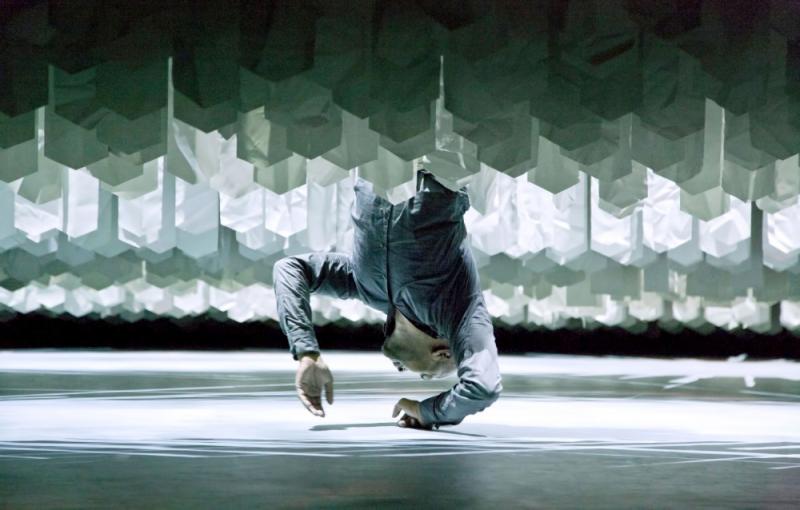
The year’s best arts story was not the cuts (which isn’t art, it’s politics), but the appearance in Edinburgh of a mysterious series of 10 magical little paper sculptures, smuggled into the city’s libraries by a booklover. No name, no Simon Cowell contract - it proved the innocent gloriousness of the human impulse to make art, a joy that has no expectation of reward but without which no existence is possible.
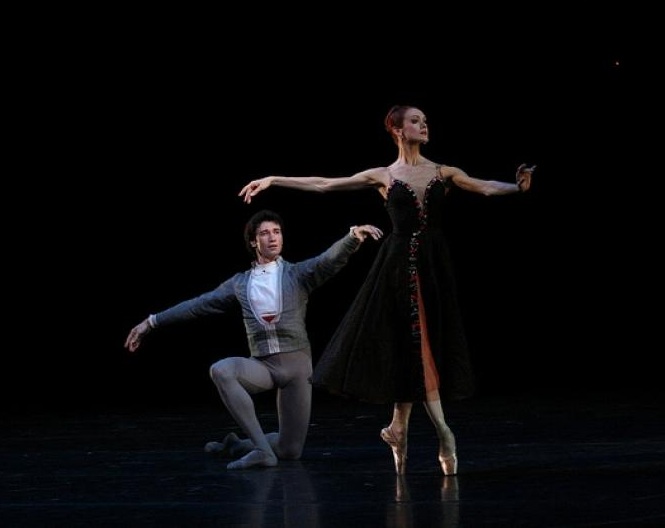 An incredible cornucopia of ballerina artistry showed that the interpretation of existing work is just as necessary to the soul as the surprise of new creation. Alina Cojocaru, Sylvie Guillem, Uliana Lopatkina (pictured right, with Daniil Korsuntsev in In the Night) and Tamara Rojo, these artists have become essential in my life, because they can only ever pose powerful, delicate questions about the art itself, and about own need for it. I felt the same listening to Murray Perahia’s piano playing in March at the Barbican, and young violinist Lisa Batiashvili in the Proms - however high the technical standards are around (and they are), there is an indefinable Higgs Boson equivalent in performing art that makes disparate things like technique, skill and understanding cohere into an emotional revelation for the beholder. That was evident in the Edinburgh story, which I will hug to myself forever.
An incredible cornucopia of ballerina artistry showed that the interpretation of existing work is just as necessary to the soul as the surprise of new creation. Alina Cojocaru, Sylvie Guillem, Uliana Lopatkina (pictured right, with Daniil Korsuntsev in In the Night) and Tamara Rojo, these artists have become essential in my life, because they can only ever pose powerful, delicate questions about the art itself, and about own need for it. I felt the same listening to Murray Perahia’s piano playing in March at the Barbican, and young violinist Lisa Batiashvili in the Proms - however high the technical standards are around (and they are), there is an indefinable Higgs Boson equivalent in performing art that makes disparate things like technique, skill and understanding cohere into an emotional revelation for the beholder. That was evident in the Edinburgh story, which I will hug to myself forever.
Other Higgs Boson proofs this year included the wonderful Lucinda Childs Dance Company, the Merce Cunningham Company’s farewell tour of early pieces, Akram Khan’s epic autobiographical solo DESH, and performances by the visiting Mariinsky Ballet of two American ballets, George Balanchine’s imperious Ballet Imperial and Jerome Robbins’ complex In the Night, each drawing out that company’s greatest specialities, technical epicureanism and emotional power.
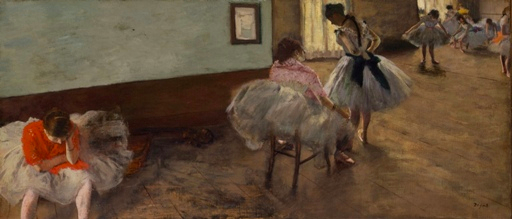 Memorable in other ways were the vulnerable, sweating little dancers portrayed in Degas’s obsessive paintings and sculptures at the Royal Academy, and the experiments with filming dance in 3D, which Wim Wenders succeeded tremendously in with his film Pina 3D, but evidently with a much higher camera budget and filmmaker’s nous than is routine on other 3D dance films. Ballet's dance with film is becoming more serious now. The Royal Ballet has overcome its copyright barriers and is pouring out DVDs of current productions to win a vast global audience. Its hyperactive new mega-budget Alice’s Adventures in Wonderland, of overstimulated design and understimulated narrative, looks aimed more successfully at the DVD market than the stage. And this year it pushed to another new green-field sector of the public with its venture to the gigantic O2 Arena with Romeo and Juliet. Will these ventures change the focus of choreographers and performers? Will that public come to Covent Garden - or does it not matter now that the ROH is diversifying its products? Time will tell.
Memorable in other ways were the vulnerable, sweating little dancers portrayed in Degas’s obsessive paintings and sculptures at the Royal Academy, and the experiments with filming dance in 3D, which Wim Wenders succeeded tremendously in with his film Pina 3D, but evidently with a much higher camera budget and filmmaker’s nous than is routine on other 3D dance films. Ballet's dance with film is becoming more serious now. The Royal Ballet has overcome its copyright barriers and is pouring out DVDs of current productions to win a vast global audience. Its hyperactive new mega-budget Alice’s Adventures in Wonderland, of overstimulated design and understimulated narrative, looks aimed more successfully at the DVD market than the stage. And this year it pushed to another new green-field sector of the public with its venture to the gigantic O2 Arena with Romeo and Juliet. Will these ventures change the focus of choreographers and performers? Will that public come to Covent Garden - or does it not matter now that the ROH is diversifying its products? Time will tell.
For the biggest 2011 story was the arts subsidy cuts, from which I mourn the likely death of what was, a dozen years ago, a world-famous British contemporary dance creative ecosystem. One of the UK's finer talents, Henri Oguike, was remaindered by the Arts Council and very few British independents remain on its books. The only outstanding new works I saw were generated by international circles and co-funders, William Forsythe’s gorgeous new duet for Guillem and Nicolas Le Riche, Rearray (pictured below, Guillem and Le Riche, © Charlotte MacMillan), Khan’s DESH, the flawed but potent Can We Talk About This? from DV8, and Sidi Larbi Cherkaoui’s quirky, bookish Apocrifu.
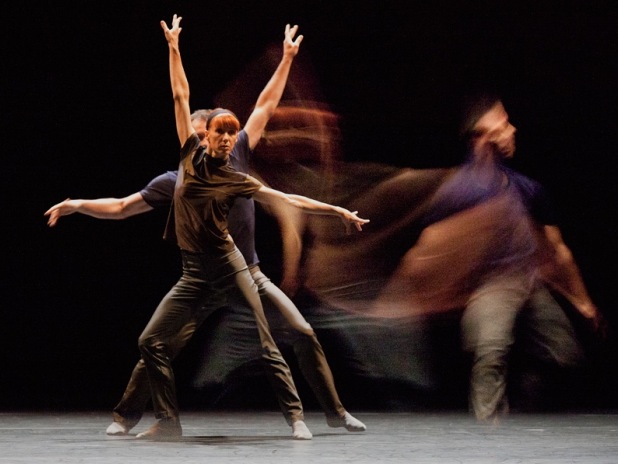 To size up these worries, theartsdesk held a Dance Question Time live event at which eight leading dance figures were unanimous that nobody in politics or, much, in the general public has realised that some arts cannot exist without the act of faith and understanding that subsidy is.
To size up these worries, theartsdesk held a Dance Question Time live event at which eight leading dance figures were unanimous that nobody in politics or, much, in the general public has realised that some arts cannot exist without the act of faith and understanding that subsidy is.
Sadler’s Wells, under Alistair Spalding, levered international co-producers effectively to commission Khan, Guillem, Wayne McGregor and Javier de Frutos. McGregor’s collaboration UnDance, which had an ambition that should be the norm, and the even more ambitious Pet Shop Boys/de Frutos fairytale creation, The Most Incredible Thing, which I wish had in fact been a little bit more incredible, though my colleague Joe Muggs loved the album.
Another big new Alice ballet was attempted with unlucky timing and pallid results by Ashley Page, so his otherwise impressive track record at Scottish Ballet wasn’t to be crowned with a palpable hit. It isn’t surprising, somehow, in these straitened times that he’s being replaced by a more conservative choreographer, Christopher Hampson.
Backstage stories abounded. The Royal Ballet appointed inside man Kevin O’Hare to succeed Dame Monica Mason, in a promising triumvirate with choreographers Wayne McGregor and Christopher Wheeldon. English National Ballet’s turbulent relationships with artistic directors past and present aired in a TV documentary that seemed to back up the fantasy posited in the deliciously awful movie Black Swan that all dance people are crazies. The Bolshoi Ballet suffered scandal after scandal, one over a potential artistic director’s private life, another when its biggest young stars, Natalia Osipova and Ivan Vasiliev, jumped ship to the Mikhailovsky Ballet, a third unwinding still over the unbelievably expensive restoration of its historic theatre, reopened for business at last - but still the Bolshoi, probably the proudest ballet company in the world, plucked dignity out of PR disaster by appointing the fine artist Sergei Filin as ballet director.
2011 Highlight: Uliana Lopatkina’s sublime search for ideal classicism in La Bayadère and utmost emotional truth in In the Night on the Mariinsky tour to Covent Garden
2011 Letdown: the oppressive thought that today will be the last day in history for Merce Cunningham’s miraculous dance company
2012 Hope: for a concerted movement by the dance world’s big beasts to make public and politicians address the need for the creative talents who are losing most in current policies. We should all fear Olympic distractions causing a lost generation of dance.
Pictured, Merce Cunningham Dance Company in Pond Way, on the last ever visit to the UK of this miraculous, monumental company
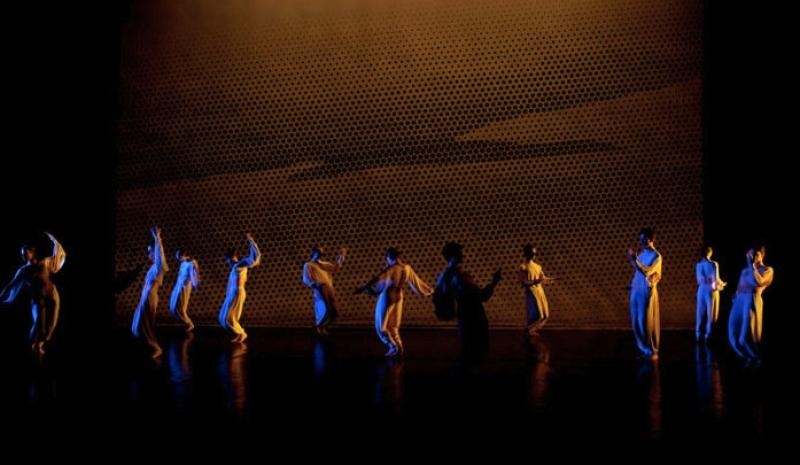
Explore topics
Share this article
The future of Arts Journalism
You can stop theartsdesk.com closing!
We urgently need financing to survive. Our fundraising drive has thus far raised £49,000 but we need to reach £100,000 or we will be forced to close. Please contribute here: https://gofund.me/c3f6033d
And if you can forward this information to anyone who might assist, we’d be grateful.

Subscribe to theartsdesk.com
Thank you for continuing to read our work on theartsdesk.com. For unlimited access to every article in its entirety, including our archive of more than 15,000 pieces, we're asking for £5 per month or £40 per year. We feel it's a very good deal, and hope you do too.
To take a subscription now simply click here.
And if you're looking for that extra gift for a friend or family member, why not treat them to a theartsdesk.com gift subscription?

Add comment